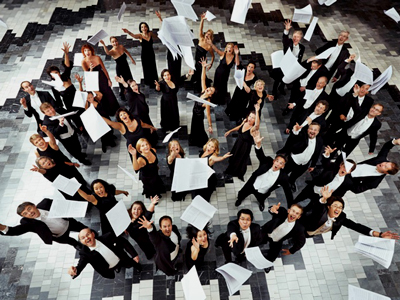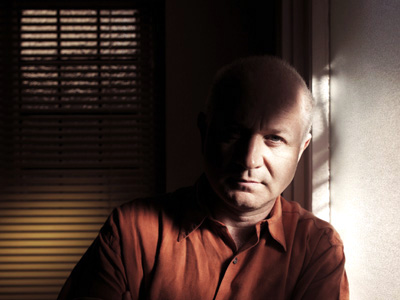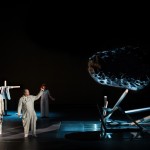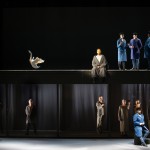by Albert Innaurato
On Saturday evening, YannickNezet-Seguin conducted The Philadelphia Orchestra in a stunning, almost unbelievably thrilling account of Rachmaninoff’s Symphonic Dances, written for the Philadelphia Orchestra in 1941. It seemed the most modern and challenging work on a program containing two world premieres. Yannick (as he introduces himself to audiences) had an amazing grasp of this piece — surprising phrases, agogic mastery, finding the sting in no longer familiar modulations, all floating along on a magic carpet of inevitability. It was feverish, reckless, and the orchestra responded with astounding virtuosity.
I was not raised to value composer Rachmaninoff; at a master class, my heart bleeding into Busoni, the “master” hit me on the back of the head and screamed, “raus, du… du… Rachmaninoff spieler!”, words to wound a young man’s soul. But I was astounded by the piece, thanks to Yannick’s insight and fire.
After this concert there was a round table with Yannick and the two composers the orchestra had commissioned to write virtuoso concerti for principles. These were Behzad Ranjbaran, whose Flute Concerto, spectacularly played by Jeffrey Khaner; and David Ludwig, whose Bassoon Concerto was gorgeously sung by Daniel Matsukawa (Ludwig described himself as a “lover of Italian opera”). This concerto has a title, Pictures From the Floating World, and many quotes from Debussy piano pieces.
An older man put up his hand and effusively congratulated both composers for not being “navel gazers” but for “communicating with the audience”. “None of this atonal stuff“, he said.
Yannick, with great charm, said “but atonal music, you know, can communicate, and can be quite beautiful”, and quickly changed the subject.
I thought the questioner was a bigoted idiot and I see the same mentality on the ‘Net all the time. Mr. Ranjbaran’s work alternated lush orchestration with “Persian” effects for harp (imitating running water), the flute circling ’round (I’d have been more impressed had I not heard these effects and others he used in Ethnomusicology 101 45 years ago). Built on the alteration of augmented seconds and perfect fifths, the harmonic language as opposed to cultural allusion seemed thin for a thirty minute piece, and for once the complaint that it sounded like movie music seemed justified (did our questioner day dream or even nod off during, thrilled not to be rudely awakened by a surprise?). Mr. Ludwig’s work was shorter and modestly tuneful (thank you, Claude) but there was a lovely movement that for all the world sounded like Sam Barber’s quietly melancholy meditations leading to a long scale that was a recurring motive in the piece but in that section provided an effective punctuation. Mr. Ludwig is the grandson of Rudolf Serkin and teaches at Curtis. I suspect he knows his Barber.
Having heard these sort of discussions in Europe, the man’s question struck me as profoundly yet proudly ignorant. Does he know what “atonal” means? What works exactly did he have in mind? If one removed the name Schoenberg or Carter or Boulez or Berg from a piece would he actually enjoy it? Would he hear surprising tunes, interesting harmonies, arresting sounds and a distinctiveness these new pieces seemed to lack, and want to listen again immediately? Now, I don’t want to be unfair to the commissions, they should be heard again, with different conductors and soloists; secrets may open up. They got big applause, but was that relief that they weren’t “worse”, or enthusiasm for local soloists and not that the pieces themselves had got the audience thinking, their minds racing, their emotions fully involved?
American “serious music” culture is very stupid. It’s all TV now; we look to be palliated and reassured not stimulated, profoundly moved, disturbed. There’s nothing wrong with being enraged or puzzled by an art work. But I think there’s a great deal wrong with wanting it to be essentially a warm bath to which one plans tomorrow’s brunch.
Well, I’m a snob and hadn’t paid for my ticket; these good people should be allowed their soul deafness. But I’m glad I’ve seen works that were hated, that inspired heated discussion, that were booed, that divided an audience. I disliked some of them too, but I left the hall feeling I had had a unique experience, an evening different from all other evenings, an escape from Law and Order reruns or yet another proficient but standard go through of a war horse. One should go to art to have one’s life changed, if only a bit, to be forced to see the dark streets and one fellow human beings a little differently afterwards, to have one’s brain buzzing. I am afraid we’ve lost that desire in “fecund America today”, and with it, the determination to fight for the survival of those endangered arts we think we love.




